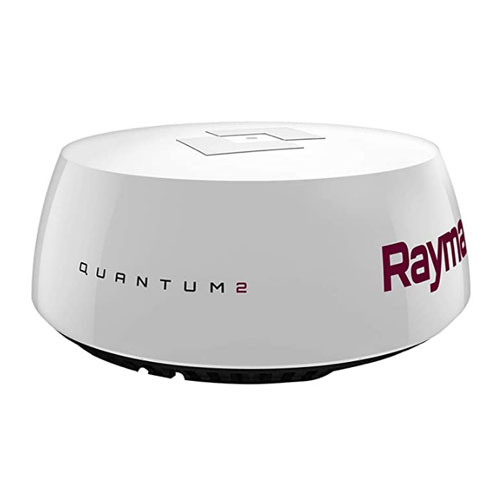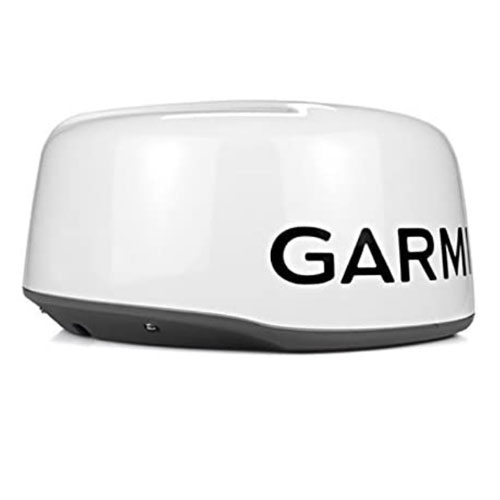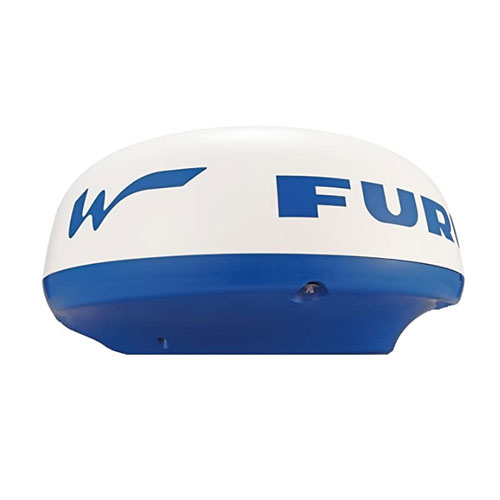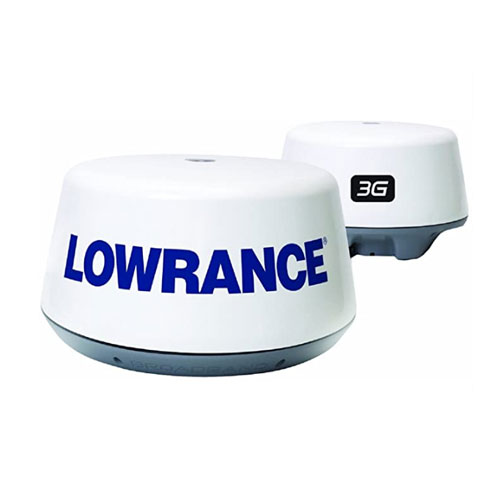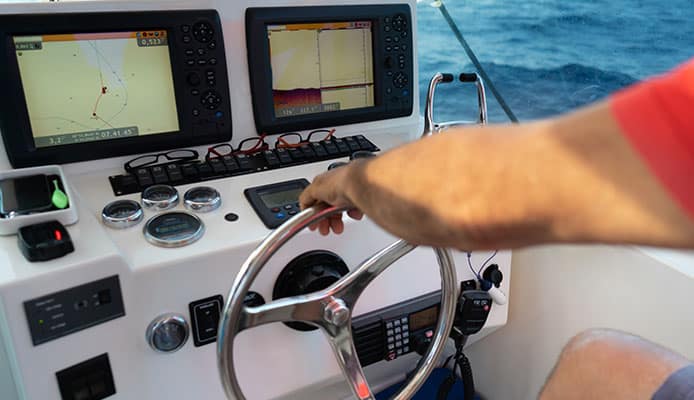
Spending time on the open water is a great way to relax. While you always hope for nice weather, perfect visibility can’t be expected every time. This is why you need a marine radar on your boat – it will alert you to objects before you can spot them and prevent you from colliding with them.
Marine radars help you navigate when the visibility is low, so you’re always aware of your surroundings. On top of this, the best marine radars will detect even smaller objects, like dinghies and buoys, to ensure that you can steer clear. Depending on the model, marine radars show you objects from 20 feet away to more than 30 nautical miles away.
If you are lost at sea with deciding which marine radar to choose, our guide is here to help. We have selected 4 of the best marine radars and created a buying guide to help you determine which boat radar system is right for your vessel.
OUR TOP PICK
Raymarine Quantum
- Stand Out Features - Why We Love It
- Advanced Target Separation technology displays each object clearly
- Unsurpassed resolution with enhanced target detail
- CHIRP pulse compression delivers more energy to each target
- Top-level short-range detection (18 feet)
- Economic operation with reduced power consumption
Dimensions: 21.3in (diameter) x 8.25in (height)
Power consumption: 20W
Max range: 24 nautical miles
Min range: 18 feet (5.5 meters)
Frequency: 9354 to 9446 MHz
Waterproof rating: IPX6
Weight: 12.3 pounds
EDITORS CHOICE
Garmin GMR 18HD+ Radome
- Stand Out Features - Why We Love It
- 4kW transmission with clear echo definition
- Dynamic Auto Gain offers improved performance in bad weather
- Dynamic Sea Filter adapts to different sea conditions
- Radar image overlay on the chartplotter map page
- MARPA tracking (requires a heading sensor and a multifunction display)
Dimensions: 20in (diameter) x 9.8in (height)
Power consumption: 30W (48W max)
Max range: 36 nautical miles
Min range: 20 meters
Rotation speed: 24rpm
Waterproof rating: IPX7
Weight: 17 pounds
BEST VALUE
Furuno DRS4W Wireless
- Stand Out Features - Why We Love It
- Completely wireless operation (shows targets on your phone)
- Compatible with any iOS device (iPhone, iPad)
- Quick and easy radar installation
- Adjustable guard zone with notifications
- Off-the-center mode for better front visibility
Dimensions: 18in (diameter) x 10in (height)
Power consumption: 24W
Max range: 24 nautical miles
Min range: 0.125 nautical miles
Rotation speed: 24rpm
Frequency: 9410 ± 30 MHz
Temperature rating: -25°C to +55°C
Waterproof rating: IP26
- Stand Out Features - Why We Love It
- The InstantOn feature gives an image immediately (no warmup)
- Low power requirement makes it great for smaller boats
- MARPA tracking with up to ten targets
- Detail-rich display merges radar image with cartography
- High-speed mode (36rpm) for instant updates
Dimensions: 19.3in (diameter) x 11in (height)
Power consumption: 18W
Max range: 24 nautical miles
Min range: 200ft (50m)
Rotation speed: 24/36rpm
Temperature rating: -25° to +55°C (-13° to +130°F)
Waterproof rating: IPX6
Weight: 16.31 pounds
How To Choose The Best Marine Radar – Buying Guide
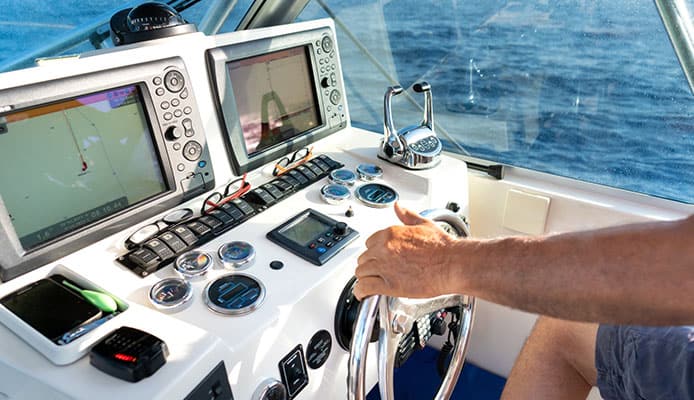
Power
The rule of thumb for radars is that more power is better. A powerful marine radar allows you to see farther and smaller objects. Power is really what determines how well your marine radar system functions, more than the height of your antenna or the height of your target.
Poor weather conditions like rain, fog, and drizzle absorb energy from your marine radar, which means a reduction in the radar range. The stronger the radar, the better it will perform in poor weather. Usually, a radar for boats will have a power range of 4kW to 25kW.
There are also lower power options available (like 2kW), but keep in mind that you get what you pay for. A 2kW marine radar will give you a radius of about 24 nautical miles, which isn’t much. This is why we recommend that you power up and get a marine radar with a larger radius.
Technology
Two technologies are used in marine radar systems. The older system is the traditional pulse radar, while the newer is a solid-state or broadband radar.
Pulse radars use high powered magnetrons to generate microwave signals with short pulses of voltage. On the other hand, solid-state radars use FMCW (Frequency Modulated Continuous Wave) technology, which is more similar to a CHIRP sonar system.
Solid-state radars tend to be the more popular choice because they emit less radiation, have flexible installation, better target resolution, require no warm-up time, and have high maximum ranges.
Mounting
You want to mount your marine radar in a place that gives it a maximum range with minimum blind spots. In addition, you should always mount the marine radar system above head height, so that you and your passengers have minimal contact with the electromagnetic energy emitted.
Normally, people mount their boat radar system at the highest point on the boat, where it has an unobstructed 360-degree view. You should avoid mounting your boat radar system near large masts, horizontal spreaders, or other solid objects because it can cause a blind spot for your marine radar.
You should also make sure that your model comes with a mounting kit. Most manufacturers include a mounting kit in the package, but not all marine radar systems are sold with the same accessories. You should check before you purchase if one is included. If there isn’t, the manufacturer should have a mounting kit available for separate purchase.
Quality
Marine radars are expensive investments that could end up saving your life. You want to ensure that you are buying the best boat radar, which means it has top-level build quality and functionality. While it’s not the only factor, looking at the brand of the marine radar can be an indicator of device quality. You should also read radar reviews to get a feel for how well the system works and if it’s durable and reliable.
Frequency of Use
The frequency of use depends on what conditions you use your boat in. If you leave the floating dock early in the morning or stay the night, you want a marine radar with a higher power and more features to keep you safe. If you want to use your marine radar to go fishing, you will want a radar that can track targets that are far away and also track weather systems that are occurring near your boat so that you don’t get caught by surprise.
If you aren’t out on your boat for long periods of time, you can invest in a marine radar with just the essential features. Most entry-level marine radar systems will have you safely navigating in poor weather and around objects, without paying for features you won’t ever use.
Weight and Size
The weight and size of a marine radar may affect which model you should buy. Always make sure that your marine radar fits your boat (before you actually install it). Some radars will not fit properly in the space you want to mount it, so you should look for a different size.
Marine radars can also be heavy. You want to ensure that the place you mount it can safely support its weight, without the risk of falling off. Smaller radars weigh less and may be able to be mounted on a mast.
You might also like: Boat Fuel Stabilizers
Height
Most marine radars have a reasonable height, but you should always be aware of how tall your marine radar is. You want to ensure you don’t accidentally run it into anything while you are cruising around. Another important aspect here is the height of the antenna. Antenna height will be a factor in how far your radar can see.
Marine radars are normally limited in sight by the curvature of the Earth’s surface and the height of the target, but the antenna height can help your radar see further. However, if you need a radar for small boats, you shouldn’t invest in a long-distance model because your boat won’t have the height needed for the radar to see its maximum distance.
Beam Width
Most marine radars will pulse with a broadcast range of 1-6 degrees. The narrower the beam width is, the more fixated the vibrations of the radar become. A narrower beamwidth will give better results in terms of target differentiation and more precise bearings.
However, keep in mind that a narrower beam width will restrict visibility in close quarters because the beam correlates to the minimum target width.
Multi-function System or Stand-alone Radar?
Multi-function systems may have a few more features but they are also more expensive. One of the features found on multi-function systems is color displays. They provide a broad spectrum of abilities and are also better at covering your electronic charts. Keep in mind, that if one part of your multi-function system doesn’t work, the entire device will not work (including the radar).
Stand-alone radars are great if you prefer dedicated displays and don’t mind seeing without color. They also have fewer features that can fail, which means less maintenance and greater reliability.
FAQs
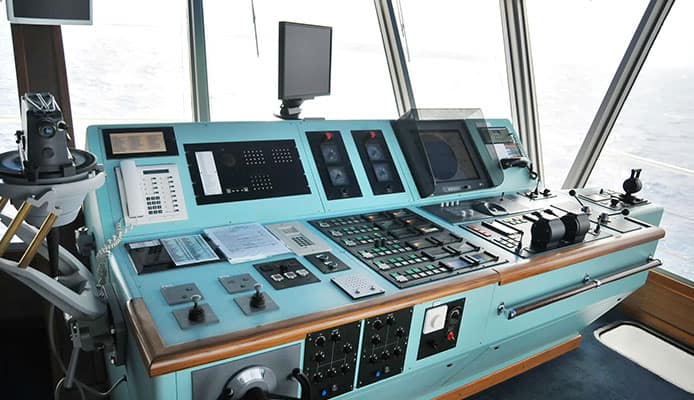
Q: What Is A Marine Radar? How Do They Work?
Marine radar systems are made specifically for ships and boats to detect other ships, boats, land obstacles, or objects on the water. Marine radars use electric signals and a rotating antenna to send out narrow beams of microwaves across the surface of the water. If there are objects in the water, they disturb the narrow beams and show up scanned into the radar as an obstacle to avoid.
Boat radars can specifically be used for collision avoidance, which keeps your boat safe. Most marine radars are built for use in the ocean and some have multiple features, and act like fish finders, in the same device. Keep in mind that marine radars also need a power source, coming from marine batteries that run your boat. They are an important safety component for your boat, alongside other safety devices like VHF marine radios and marine GPS systems.
Q: Does A Marine Radar Come With HD Transducer, Cables, And Mounting Kit?
Yes, the majority of marine radars come with an HD transducer and cables. As for the mounting kit, it depends on the manufacturer and the model of your radar. Not all radars come with the same accessories upon purchase, this varies by brand and model.
Before purchasing, you should check what is included in the box. It should be indicated on the packaging whether a mounting kit is included and if it isn’t, it should say how you can purchase that separately. You can also check the product website to see what you’re getting and where to purchase all the parts you need for your radar.
Q: How To Maintain A Marine Radar?
A marine radar doesn’t need to be cleaned often, but a quick wipe down can keep it looking like new. You can maintain a sailboat radar and yacht radars as you would the rest of your vessel. Generally speaking, marine radars are built tough. They are made of anti-corrosive materials which make them resistant to the changing weather conditions and salt from the water.
To eliminate most problems, you must properly mount the radar. If you ever have problems with the wiring or hardware, it is best to consult the user’s manual or guide. If you aren’t confident in fixing the problem, contact the company or someone certified to do repairs.
Q: What Can A Radar Detect?
A boat radar can detect ships, boats, and other vessels that are within radar range. It can also detect floating and static objects in the water, so it’s easier to avoid them. Keep in mind that the distance and size limit depends on the power of your radar. Depending on the model, your radar can also show you the range and moving speed of objects.
Q: Does Rain Affect Radar?
Yes to a degree. While the radar still works, rain absorbs the signals and significantly reduces the range of your radar. This means that boats and objects must be much closer for the system to pick them up. In addition, rain can also reflect a certain percentage of the signal, which ‘clutters’ the radar and masks other objects. This does allow you to pick up rain and track storms as they approach you with the radar. No longer will a storm creep up on you in the dark of the night as the radar will warn you before the storm's arrival of its presence.
Q: What Frequency Is Marine Radar?
Most marine radars work with X-band (10GHz) or S-band (3GHz) frequencies. The higher frequency of the X-band is better at giving sharper images at a higher resolution, while the S-band performs better in bad weather conditions like rain and fog. In addition, the S-band is slightly better for identifying and tracking targets on the radar.
Q: Is Marine Radar Dangerous?
No, not really. This is a common misconception. Based on numerous research over the years, radio frequencies used by marine radars don’t cause any damage to human tissue. This means that boat radars won’t give you cancer or cause any health issues. The waves can cause harmless heating on the skin, but not much else.
Globo Surf Overview
As one of the crucial pieces in boating safety, a top-rated radar can help you avoid any collisions and maintain a safe voyage. By investing in a marine radar, you can scan the water ahead and be certain of your location. On top of this, the best boat radars will even have extra features that will make your time on the water even better. Hopefully, our guide has made your decision easier, so you can be confident when choosing a model for your boat.
More Boating Parts Reviews:
- Boat Seats
- Boat Fuel Tanks
- Outboard Motors
- Boat Carpets
- Marine Toilets
- Marine Power Inverters
- Boat Steering Wheels
- Marine Battery Boxes
- Marine Battery Chargers
Do you own one of the marine radars that made it onto our list? Let us know how it has worked for your outdoor needs in the comments section below.



